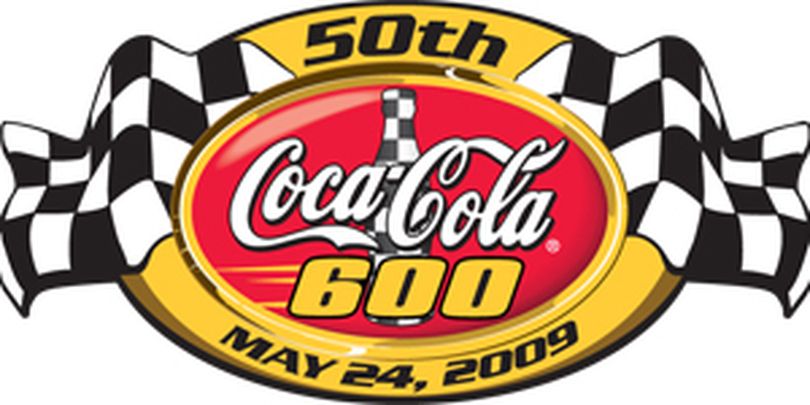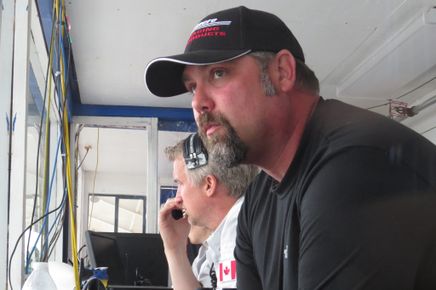Conquering Coca-Cola 600 is Crowning Achievement

Crown jewels are artifacts of the reigning royal family of their respective countries. They belong to monarchs and are passed down the line to the next sovereign to symbolize the right to rule. They may include actual jewels such as crowns, scepters and rings, or other objects like swords or documents or even ceremonial garments.
Guest Column By Cathy Elliott
Courtesy: NASCAR Media Relations
A particular woman I know, who stubbornly continues to labor under the assumption that she is funny, has been known to comment more than once that she's had marriages that didn't last as long as a 500-mile race at Darlington.
OK, it's me. I am that annoying person who routinely cracks herself up. But relax; I didn't mean it.
What I really meant to say was that I've had marriages that didn't last as long as the Coca-Cola 600 at Charlotte.
Most people know this, but just as a refresher course, there were four races back in the 1980s that were plucked from the schedule and given the designation of "The Crown Jewels of NASCAR."
Crown jewels are artifacts of the reigning royal family of their respective countries. They belong to monarchs and are passed down the line to the next sovereign to symbolize the right to rule. They may include actual jewels such as crowns, scepters and rings, or other objects like swords or documents or even ceremonial garments.
Other types of artifacts are a little less fancy, but no less valuable. How about "Lucille," B.B. King's legendary guitar? The original draft of the song "Imagine," scribbled in John Lennon's own hand, is in my mind one of music's greatest treasures. The bat Hank Aaron used to send home run number 715 soaring over the fence is in modern terms comparable to King Arthur's mighty sword Excalibur, to belong only to someone with the physical and emotional fortitude required to wield it.
The legacies of each of NASCAR's crown jewels, the reason fans and the racing industry alike consider them so valuable to the sport, are obvious and I have never heard even one person argue their merits, or dispute their inclusion on this very exclusive list. Here they are, in no particular order.
First, of course is Daytona, the richest track on the NASCAR Sprint Cup Series circuit.
Money does talk, but sometimes it pontificates. Daytona International Speedway is like that. Not the oldest oval track on the circuit, or even the largest (Talladega edges it out by a nose), still the Daytona 500 trophy is the most ecologically correct of any race winner's reward, because it is the greenest.
Ask the proverbial man on the street to describe stock car racing in one word, and the adjective you'll probably hear most often is "fast." Fittingly, the second jewel in the NASCAR crown is Talladega Superspeedway, the NASCAR Sprint Cup Series' fastest track. Even the mandated use of restrictor plates hasn't hindered the speeds at 'Dega. In an interview following the race in April, winner Brad Keselowski said his car had been clocked at a top speed of 204 mph.
Talladega gives fans the thing they desire most. If you routinely experience an overwhelming need for speed, you have found a home.
Darlington Raceway and its recently resurrected Southern 500 is jewel number 3. History, tradition and respect get the nod here. If Darlington were a movie star, she would be Lauren Bacall, or Katherine Hepburn. Every man pursues her with the intensity and focus of a laser beam, usually ending up sweaty and disappointed at the race's end. She's a classy old broad, with a timeless appeal.
Jewel number four is Lowe's Motor Speedway's Coca Cola 600, the longest race in NASCAR. Drivers approach the 600 like runners approach the New York Marathon. They train for it.
They may also approach it like Davey Crockett and Jim Bowie approached the Alamo, but with a happier ending for at least one of them.
The keyword that comes to mind when you think about the Coca Cola 600 is fortitude. I remember one year when I watched the first 20 laps or so of the race, then went to the grocery store, stopped by the mall for a new pair of cross trainers, went home and tested out the cross-trainers on the treadmill for a couple of miles, took a quick shower, walked the dog around the block, applied antibacterial ointment and Barbie Band-aid to the blisters acquired from the new cross-trainers and then hit the sofa to watch the end of the race.
The problem with that plan was that the race was only half over.
My puny but reasonably healthy self was “worn slam out,” as the folks back home would put it. I truly cannot imagine how the drivers must have been feeling right about then.
Former pro basketball superstar Bill Russell once said, “Concentration and mental toughness are the margins of victory.” To bring it into a clearer NASCAR focus, the Coca Cola 600 is the rough equivalent of driving flat-out from Charlotte to Chicago with no air conditioning, bathroom breaks or a nice leisurely stop at Cracker Barrel, while 42 other cars continuously try to knock you out of the way. Basically, the last man standing lays claim to the monarch’s rightful spoils.
Now, that’s a crown worth fighting for.
